News 9/16/10
From Spice Surfer: “Re: Mark Young. I noticed that Mark Young, Sage’s SVP of IT and CIO is no longer on the Sage website. Is he gone?” The folks at Sage sent over confirmation: “Mark Young left Sage to pursue other opportunities. Though his experience and insight will be greatly missed, we wish him the best in future endeavors.”
The New Jersey HIT Extension Center (NJ-HITEC) selects PatientPoint to provide health IT consulting to practices deploying EHRs and trying to qualify for Meaningful Use.
Hillside Avenue Family and Community Medicine (RI) says its use of McKesson’s Practice Partner EHR enabled them to reduce patient ED visits by 10%, decrease the average glucose levels of diabetics by 5%, and increase rates of screening for depression and smoking. The practice attributes the improved outcome to Practice Partner’s tracking tools and the ability to keep patient health information updated. By the way, the charming artwork above is direct from Hillside’s Web site.
Here’s another argument in favor of EHRs: the Federation of State Medical Boards (FSMB) says that EHRs could help state medical boards assess a physician’s clinical competence, which could one day be required for license renewal. The FSMB’s “Maintenance of Licensure” (MOL) framework says that physicians should continually engage three types of activities: reflective self-assessment, the assessment of knowledge and skills, and the demonstration of performance in practice.The FSMB believes the use of IT and EHRs in particular will be “of value” to doctors as they fulfill professional obligations and demonstrate their ongoing clinical competence.
Physician rating sites take note: few publically available characteristics of individual physicians make good indicators of physician performance or clinical quality measures. The only factors found associated with higher overall performance were gender (females did 1.4% better than males), board certification (3.3% better than non-certified,) and graduation from a domestic medical school (1% better than international). Malpractice claims were not significantly associated with performance. This study, published in The Archives of Internal Medicine, looked at 124 quality measures for 10,408 Massachusetts doctors.
Medical billing provider AdvantEdge Healthcare Solutions appoints Lahey Clinic (MA) CEO David M. Barrett, MD.
The Physicians Foundation is handing out 15 HIT-related grants, worth almost $2 million, to promote the use of HIT to improve physicians’ practice environment and quality patient care. Projects winning support include a Meaningful Use Achievement Toolkit, an HIT in Practice program to support EHR implementation in small practices, and grants to help physicians implement EHRs. The Physicians Foundation, by the way, was founded in 2003 through the settlement of a class-action lawsuit brought by physicians and medical associations against private third-party payers.
Dell continues its efforts to be a player in healthcare, announcing plans to integrate healthcare applications with its new Streak 5-inch Android-based mobile device. Dell says physicians will be able to buy the Streak as an integrated component of its EMR technology bundle, which I assume means its software partners (Practice Fusion, Allscripts, eClinicalWorks, and Meditech/JJWild) will soon announce Streak-compatible options. Dell is emphasizing the device’s size and weight, which they say make it easy for a physician to carry in a lab coat pocket. To me, that sounds as if Dell is positioning the Streak as an alternative to a tablet PC rather than a smart phone.
However, I was curious how the Streak compared to the iPhone. Here’s one recent review:
The iPhone has an advanced 3.5” screen with a resolution of 960 x 640 pixels, the Dell Streak has a larger 5” screen with a lower resolution of 800 x 480. The Apple excels in resolution, the Dell in size. However, if you actually have to read something you generally have to expand it on the iPhone, that happens less often on the Dell, because the screen is so much larger. Whether it is using the screen keyboard, reading from the Kindle application that both now have, watching a movie or sharing a picture, or just browsing the web, the bigger screen is better. In terms of portability and phone use, both devices are substantially larger than the cell phones we used to carry and the Streak likely hits the upper limit. Both also look a bit dorky when held up to your head so both should have headsets.
NaviNet hires Shari L. Zedeck as VP of product management. She has served in similar roles with other software vendors, including Chordiant Software and Mindreef. NaviNet also mentions plans to roll out a unified patient information management system that integrates PM and EMR capabilities.

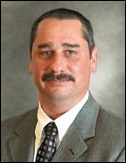
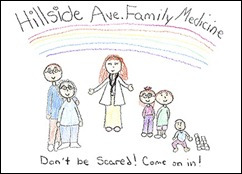
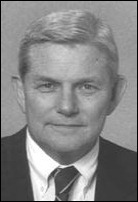
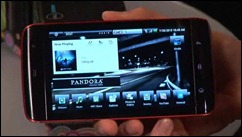


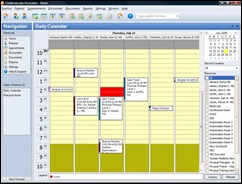

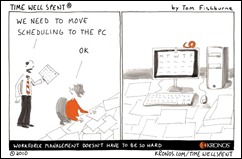



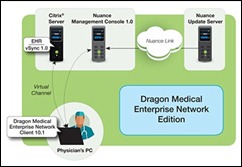
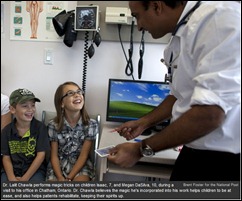


Re: Walmart Health: Just had a great dental visit this morning, which was preceded by helpful reminders from Epic, and…